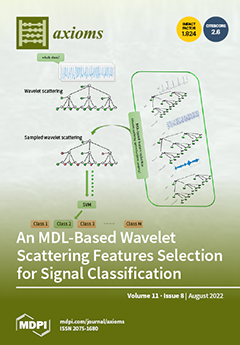One recent and prolific direction in the development of fixed point theory is to consider an operator
defined on a metric space
which is an
F—contraction, i.e.,
T verifies a condition of type
, for all
,
, where
and
satisfies some suitable conditions which ensure the existence and uniqueness for the fixed point of operator
T. Moreover, the notion of F-contraction over a metric space
was generalized by considering the notion of
—contraction, i.e., a condition of type
, for all
,
for some appropriate
functions. Recently, the abovementioned F-contraction theory was extended to the setup of cone metric space over the topological left modules. The principal objective of this paper is to introduce the concept of vectorial dislocated metric space over a topological left module and the notion of
A-Cauchy sequence, as a generalization of the classical Cauchy sequence concept. Furthermore, based on the introduced concept, a fixed point result is provided for an operator
, which satisfies the condition
—contraction, where
are defined on the interior of a solid cone.
Full article




